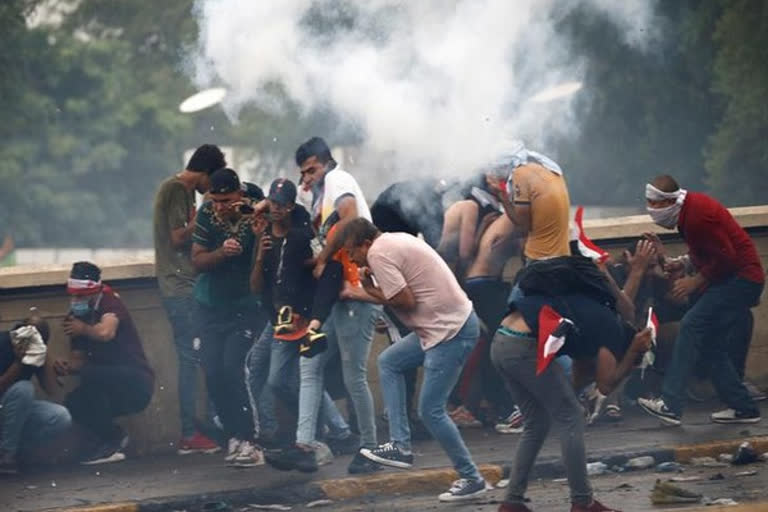Baghdad: Iraqi security forces fired tear gas to clear lingering protesters in Baghdad on Saturday morning after dozens died in a bloody resumption of anti-government rallies to be discussed in parliament.
Since anti-government rallies first erupted on October 1, nearly 200 people have died and thousands were wounded in Baghdad and across the country's Shiite-majority south in violence condemned worldwide.
Almost a quarter of them, 42, succumbed on Friday alone from live rounds, tear gas canisters or while torching government buildings or offices belonging to powerful Hashed al-Shaabi paramilitary factions in several southern cities.
The storming of provincial headquarters, parliamentarians' workspaces or Hashed offices marks a new phase in the southern rallies but has yet to take place in the capital.
In Baghdad, a few hundred protesters dug in around the emblematic Tahrir Square on Saturday morning despite efforts by riot police to clear them with tear gas.
Oil-rich Iraq is OPEC's second-highest producer, but one in five people live below the poverty line and youth unemployment sits at 25 percent, according to the World Bank.
The staggering rates of joblessness and allegations of corruption sparked the widespread protests on October 1 and the government has struggled to quell public anger by offering reform plans.
Prime Minister Adel Abdel Mahdi has suggested a laundry list of measures including hiring drives, increased pensions, and a cabinet reshuffle.
New education and health ministers were approved by parliament in a session earlier this month, the only time it was able to reach quorum since protests began.
But protesters seemed unimpressed.
About 60 percent of Iraq's 40-million-strong population is under the age of 25.
Protesters have directed some of their anger at the country's top Shiite religious authority, Grand Ayatollah Ali al-Sistani who is deeply revered among most Iraqis.
Others have been waiting for a signal from influential populist cleric Moqtada al-Sadr who has thrown his weight behind protests.
On Friday, Sistani urged protesters and security forces to show restraint, warning of chaos if violence resumed.
Riot police had been trying to keep protesters around Tahrir from reaching the high-security Green Zone across the river which hosts government offices including parliament.
Lawmakers are scheduled to meet there at 1:00 pm to discuss protesters' demands, cabinet decisions and the implementation of reforms.
Speaker Mohammed al-Halbusi said he visited Tahrir overnight, but many demonstrators shunned the participation of mainstream politicians whom they see as trying to co-opt their movement.
Read Also:iraq-12-killed-in-bomb-explosion-in-karbala
There were calls for fresh protests in the south as well despite authorities announcing curfews across several provinces on Saturday.
Many expected a public outcry from the families of those killed the previous day as they prepared for their burials.
Late Friday, 12 protesters died in the southern city of Diwaniyah alone while setting fire to the headquarters of the powerful Badr organization, part of the Hashed paramilitary faction.
Public anger is directed at them in addition to governorate councils for they were the obvious face of the regime, wrote Harith Hasan, a senior fellow at the Carnegie Middle East Center.
But it was also a chance for Sadr to swipe at his rivals in the Hashed.
The Sadrists, especially in their traditional strongholds such as Missan, saw this an opportunity to act against competing militias such as Asaib Ahl al-Haq, Badr, and Kataeb Hezbollah, Hasan tweeted.



